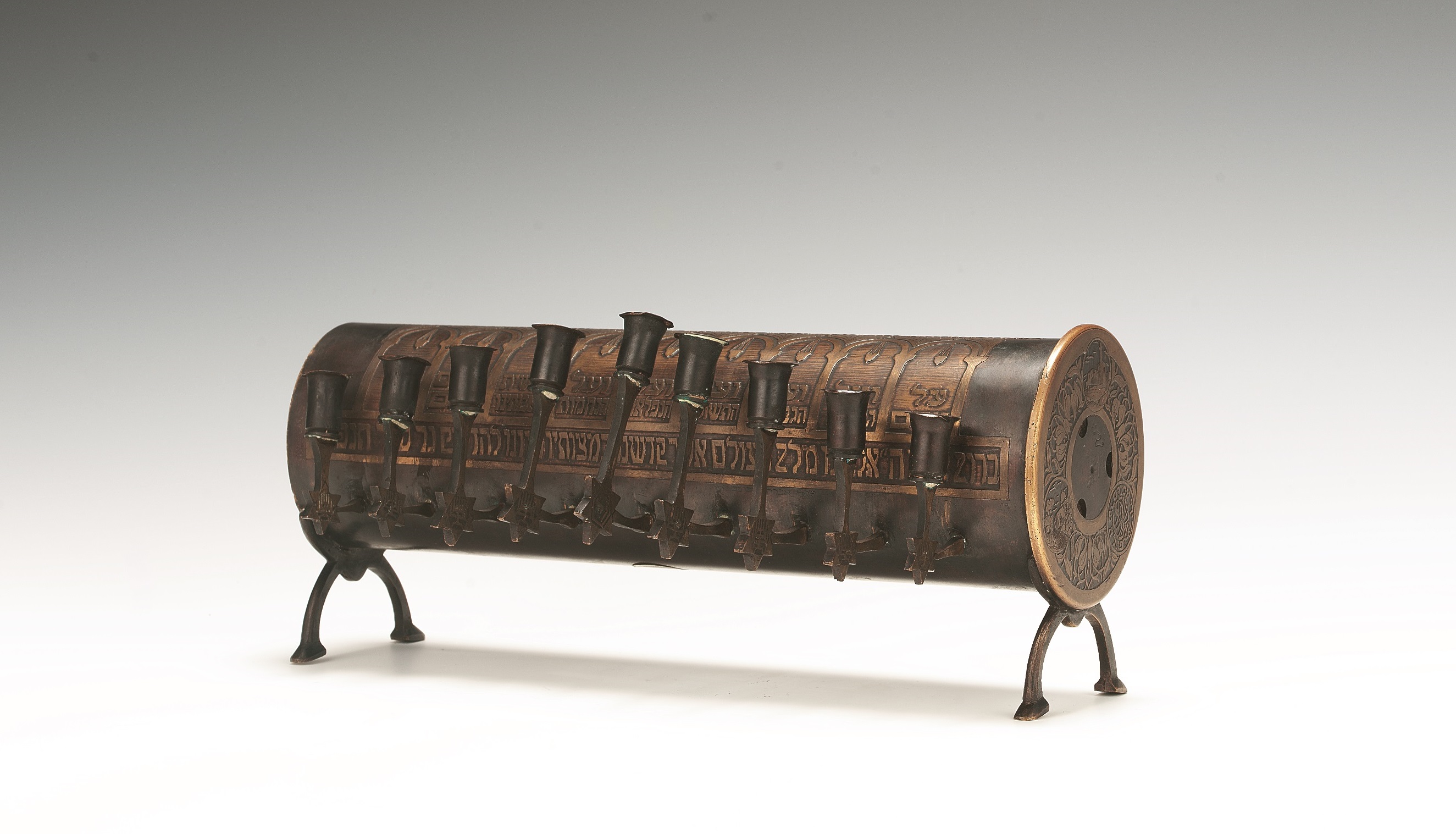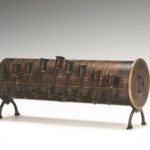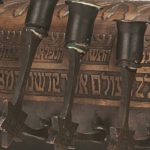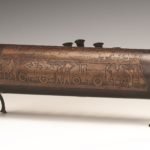WWI Hanukah Lamp
- What can we see?
If we look closely we can see nine candle holders. Behind the candle holders we can see some Hebrew writing.
Look again, what can you see?
- What do we know?
This is a Hanukah Lamp which Jewish people use during the festival of Hanukah. Hanukah is the Festival of Lights which usually occurs in November or December. To celebrate this festival Jewish people light a 9 branched Hanukiah (Hanukah Lamp). We light 1 candle for each of the 8 nights of Hanukah, plus 1 candle called the Shamash (Helper) which helps us to light all the other candles.
This Hanukah Lamp is made out of a brass shell case from WWI. We call this type of artwork ‘Trench Art’ as pieces like this were often made in the trenches by soldiers using whatever materials they had available. This Hanukah Lamp was made as a gift after the war for Sir Herbert Samuel, the first British High Commissioner of Palestine, 1920 – 1925.
- What do we wonder?
We might wonder who made this Hanukah Lamp? Where did the shell case come from?
What do you wonder?
- Object File
Object Name: WWI Hanukah Lamp
Date: 1920s
Catalogue Number: JM 273
Material(s): Brass
Size: 11 cm in height x 128 cm in length x 13 cm in depth
On display in the Jewish Museum: Yes
Hanukah remembers the story of the Maccabees. Over 2,000 years ago an evil King took over the temple in Jerusalem. The Maccabees fought against the king to reclaim the temple. When the Maccabees had won, they tried to relight the temple’s sacred Menorah. The Menorah was a seven branched candelabra which was meant to be kept alight at all times. When they tried to light the Menorah there was only enough oil to last for 1 day. However, a miracle happened and the small jar of oil lasted for 8 days and 8 nights.



